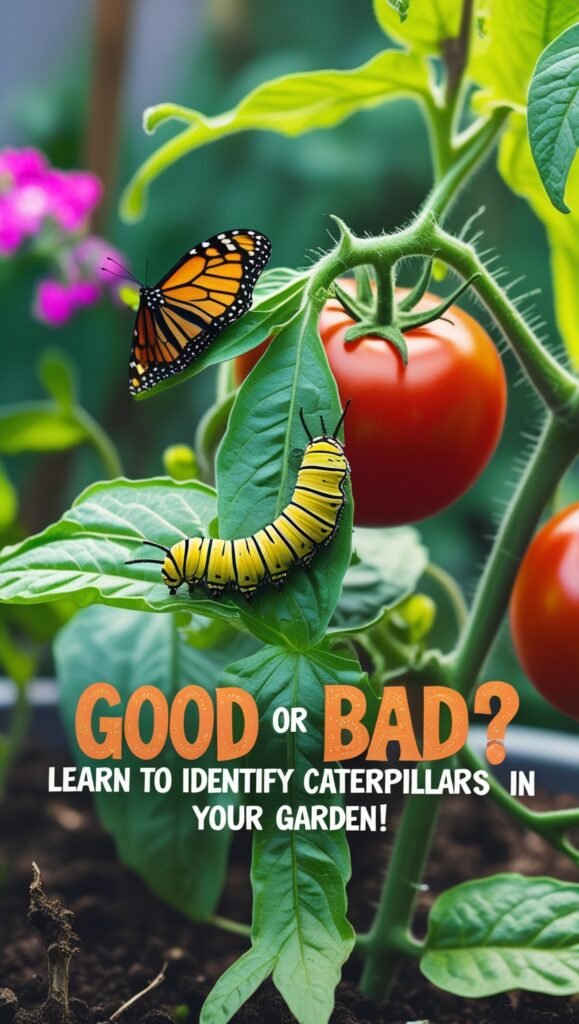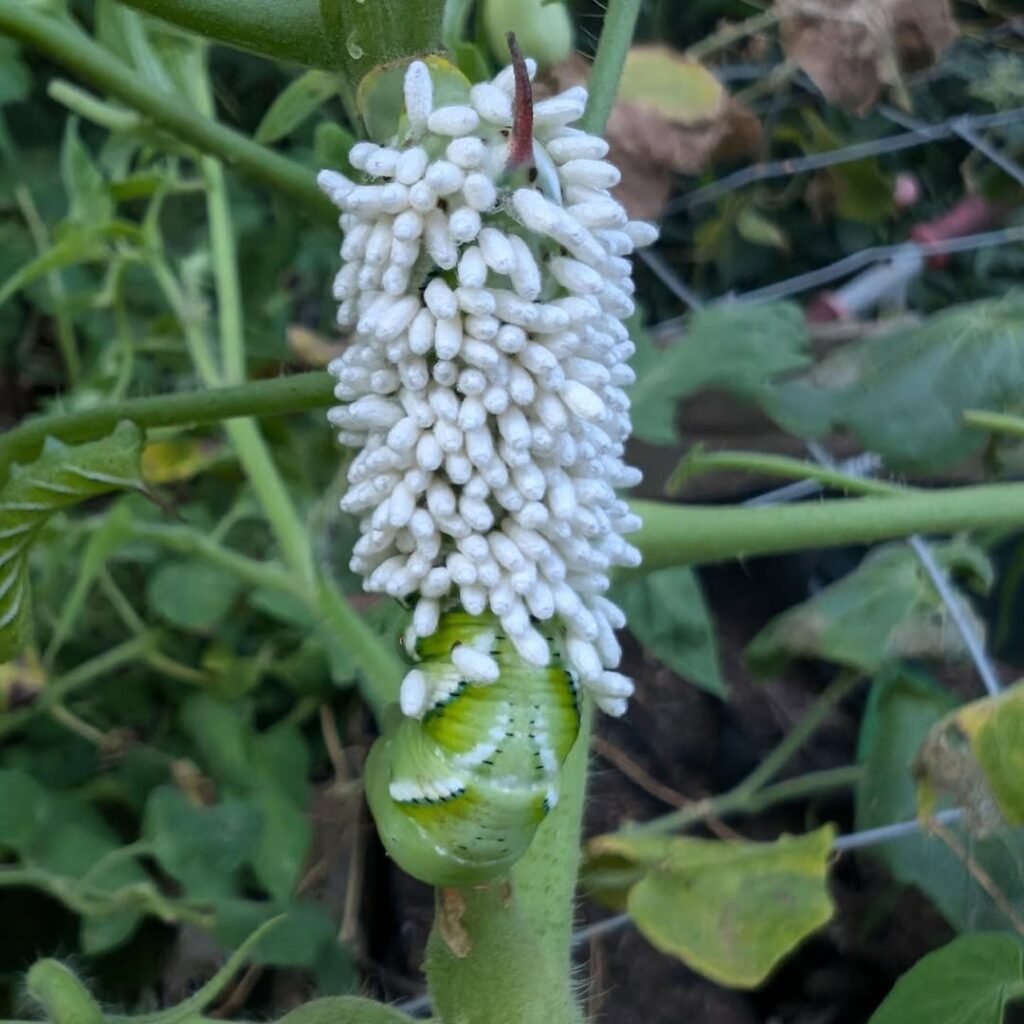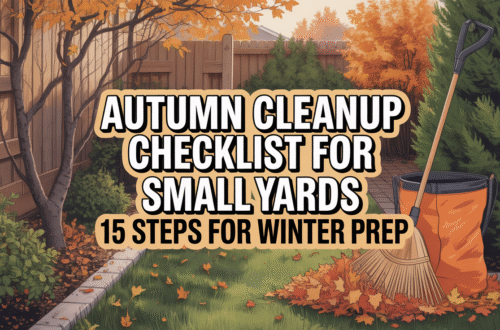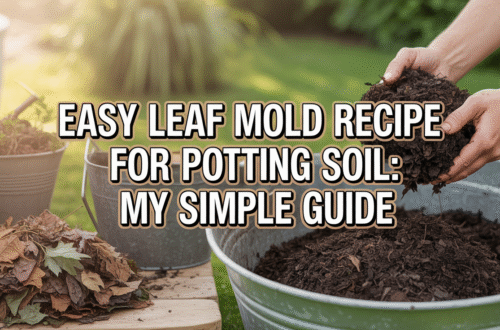Learn how to tell good caterpillars from bad caterpillars with this easy guide. Includes pictures of good caterpillars, pictures of bad caterpillars, and a caterpillar identification chart.

Hey there, fellow gardeners! I’m Ashley Scott, and I’ve been digging in the dirt for over 10 years. If you’re like me, you’ve probably spotted a caterpillar munching on your plants and wondered, “Is this little guy a friend or a foe?” Caterpillars can be tricky—some are garden heroes, while others are total troublemakers. That’s why I’m here to help you figure out how to tell good caterpillars from bad caterpillars. By the end of this guide, you’ll be a caterpillar expert, ready to protect your garden without harming the good guys. Let’s dive in!
What’s the Difference Between Good and Bad Caterpillars?
First things first, let’s clear up what makes a caterpillar “good” or “bad.” It’s all about their impact on your garden.
- Good Caterpillars: These are the larvae of butterflies and moths that pollinate your plants. Think of them as future garden helpers. For example, the caterpillar of the Monarch butterfly might nibble on milkweed, but it’s a small price to pay for those beautiful pollinators.
- Bad Caterpillars: These are the pests that can wreak havoc on your plants. They munch on leaves, stems, and even roots, leaving your garden looking like a salad bar. A classic example? The tomato hornworm, which can strip a tomato plant bare overnight.
So, the key to a thriving garden is knowing which caterpillars to welcome and which ones to show the door.
How to Identify Good Caterpillars
Good caterpillars are usually the larvae of beneficial insects like butterflies and moths. Here’s how to spot them:
- Color and Patterns: Many good caterpillars have bright colors or unique patterns. For instance, the black-and-yellow striped caterpillar of the Monarch butterfly is easy to recognize.
- Size: They vary in size, but most are small to medium-sized, rarely exceeding a few inches.
- Feeding Habits: Good caterpillars often feed on specific plants. Monarch caterpillars, for example, stick to milkweed, while swallowtail caterpillars prefer parsley or dill.
- Behavior: They tend to be solitary and don’t cause widespread damage.
Pro Tip: If you see a caterpillar on a plant that’s not being decimated, it’s likely a good one. They usually coexist peacefully with your garden.
How to Identify Bad Caterpillars
Bad caterpillars, on the other hand, are the ones that can turn your garden into a buffet. Here’s what to look for:
- Color and Texture: Many pest caterpillars are green or brown, blending in with leaves. Some, like the brown caterpillar fuzzy, might look harmless but can be destructive.
- Size: They can be larger, like the tomato hornworm, which grows up to 4 inches long.
- Feeding Habits: Bad caterpillars often feed in groups and can strip entire plants. If you see skeletonized leaves or large chunks missing, it’s a red flag.
- Behavior: Some bad caterpillars, like armyworms, move in masses, devouring everything in their path.
Personal Story: I once found a horde of cabbage loopers on my kale. At first, I thought they were cute, but within days, my kale looked like Swiss cheese! Lesson learned—always check for group feeders.
Pictures of Good and Bad Caterpillars
A picture is worth a thousand words, especially when it comes to caterpillars. Here are some visuals to help you tell the good from the bad:
Pictures of Good Caterpillars:
Monarch Caterpillar (black, yellow, and white stripes)

Swallowtail Caterpillar (green with black and yellow spots)

Pictures of Bad Caterpillars:
Tomato Hornworm (green with white stripes and a horn)

Cabbage Looper (green with a looping walk)

Note: Always cross-reference with a reliable source. For more images, check out this How to Stop Caterpillars from Eating Your Plants.
Caterpillar Identification Chart
Need a quick way to identify caterpillars? Here’s a simple caterpillar identification chart:
| Feature | Good Caterpillars | Bad Caterpillars |
|---|---|---|
| Color | Bright, patterned (e.g., stripes, spots) | Often green, brown, or camouflaged |
| Size | Small to medium (1-3 inches) | Can be larger (up to 4 inches) |
| Feeding | Solitary, specific plants | Group feeders, widespread damage |
| Movement | Slow, individual | Fast, sometimes in masses |
| Examples | Monarch, Swallowtail | Tomato Hornworm, Armyworm |
Tip: Keep this chart handy in your garden shed for quick reference. Want more details? See my Butterfly Gardening Tips.
Are Caterpillars Dangerous to Humans?
Most caterpillars are harmless, but some can be a bit of a nuisance. Here’s what you need to know about is caterpillar dangerous:
- Skin Irritation: Some caterpillars, like the brown caterpillar fuzzy, have hairs that can cause itching or rashes. Always wear gloves when handling them.
- Poisonous Caterpillars: A few, like the saddleback caterpillar, have venomous spines. They’re rare but worth watching out for.
- Allergic Reactions: If you’re allergic to insect stings, be cautious. Symptoms can include redness, swelling, or itching.
Safety First: If you’re unsure, don’t touch it. And always wash your hands after handling any caterpillar. Learn more from University of Florida’s Guide to Poisonous Caterpillars.
How to Deal with Bad Caterpillars in the Garden
So, you’ve spotted a bad caterpillar—now what? Here are some eco-friendly caterpillar treatment for plants:
- Handpicking: If there are only a few, pick them off and relocate them. I usually drop them in soapy water to prevent them from coming back.
- Natural Predators: Encourage birds, ladybugs, and parasitic wasps. They love to snack on pest caterpillars.
- Organic Sprays: Use neem oil or Bacillus thuringiensis (Bt) to target caterpillars without harming beneficial insects. Check out National Pesticide Information Center’s Bt Guide.
- Companion Planting: Plant herbs like dill or flowers like marigolds to deter pests.
Prevention Tip: Keep your garden clean and rotate crops to avoid infestations. For more tips, read my Beneficial Bugs for Succulents: A Complete Guide to Natural Plant Allies.
Is Your Caterpillar Healthy or Sick?
Sometimes, you might find a caterpillar that looks off. Here’s how to tell if it’s healthy or sick:
- Healthy Caterpillars: They’re active, have a smooth body, and eat regularly.
- What Does a Sick Caterpillar Look Like?: Look for discoloration, sluggishness, or a shriveled appearance. If it’s not moving or eating, it might be sick or parasitized.
Fun Fact: Some caterpillars are parasitized by wasps, which lay eggs inside them. If you see tiny white cocoons on a caterpillar, it’s likely a goner. Curious? Learn more at Cornell University’s Biological Control Page.
How to Tell If a Caterpillar Is Toxic?
Wondering about poisonous caterpillars? Here’s a quick guide:
- Spines or Hairs: Toxic caterpillars often have visible spines or bristly hairs. The saddleback caterpillar, for example, has a green body with a brown saddle and stinging spines.
- Bright Warning Colors: Some toxic species use bright colors to warn predators. Think red, yellow, or orange.
- Reaction Test: If you accidentally touch one and feel a sting or rash, it might be toxic.
Caution: Never handle a caterpillar you suspect is toxic. For a detailed list, visit Penn State Extension’s Insect Guide.
Conclusion
Caterpillars can be a mixed bag in the garden, but with a little know-how, you can easily tell the good from the bad. Whether it’s a helpful Monarch caterpillar or a pesky tomato hornworm, knowing how to tell good caterpillars from bad caterpillars will save your plants and boost your garden’s health. So, next time you spot one, take a closer look before you act. And if you’re ever in doubt, refer back to this guide or visit my website, USA Garden Hub, for more gardening tips.
Happy gardening, and may your garden be full of the right kind of caterpillars!





One comment on “How to Tell Good Caterpillars from Bad Caterpillars: A Gardener’s Guide”